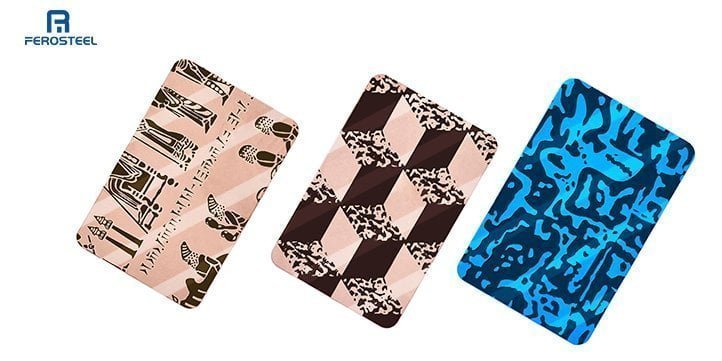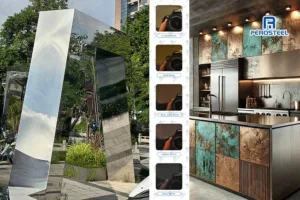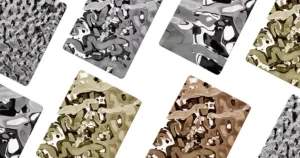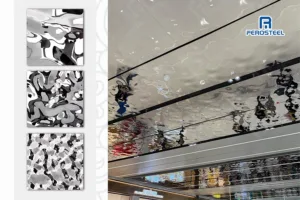
The basic principle of stainless steel etching plate: using the strong chemical action of ferric chloride, the surface of the stainless steel plate is etched, and the ferric iron becomes stable iron. The actual production process is to apply an anti-rust layer on the surface of the stainless steel plate, protect the parts to be protected, put it into the production line of spraying ferric chloride, and clean the anti-corrosion layer after corrosion to form a pattern.
Stainless Steel Etching Plate Process
To ensure a tight connection between screen printing and the metal surface, it’s essential to completely remove oil stains and oxide films on the metal etching surface through pre-etching treatment.
Based on the product’s oil stain status, it’s recommended to carry out degreasing, and electric degreasing is preferable before screen printing to guarantee the degreasing effect.
Selecting a high-quality etching solution suitable for the metal material and film thickness is necessary to remove the oxide film effectively.
Before printing, ensure to dry the screen packaging thoroughly. Any water left on the surface will adversely affect ink adhesion, causing the pattern etching effect to collapse and affecting the overall decoration result.
Screen printing requires a standard pattern screen plate based on printing needs. Thick screen stencils provide better masking properties and high etching patterns, playing a protective role in the pattern decoration design. Thus, photolithography is frequently applied.
The film of the screen version undergoes a photochemical reaction under light. The part directly irradiated by the light stands up on the film that is not dissolved in water, while the part directly irradiated by the light dissolves in water, exposing the inner space of the screen. Finally, the screen pattern consistent with the black and white full-sheet pattern is printed on the screen plate of the plastic film.

The colored stainless steel etching plate uses 8K mirror stainless steel, metal wire drawing plate, and sandblasting plate as the base plate to chemically etch various patterns on the surface of the stainless steel plate. After etching, the stainless steel decorative plate is produced and processed. For example, implement complex machining processes, such as partial structural reinforcement, metal wire drawing, inserting metal materials and partial titanium metal. The stainless steel etched plate achieves a glossy effect between the shades of the pattern.



